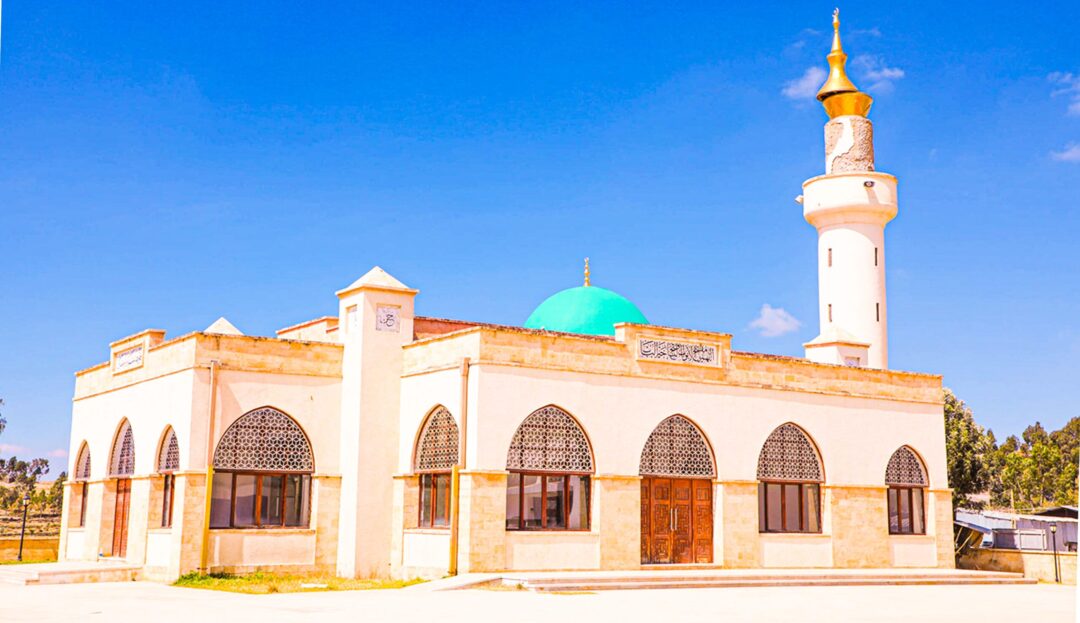 Stories
Stories
May 6, 2025 • 3 min read
The Al-Nejashi area in Ethiopia's Tigray region has faced severe devastation during the two-year armed conflict from November 2021 to November 2023. The Al-Nejashi Health Centre, once a vital healthcare facility, was heavily damaged. In 2023, with funding from the Bureau of Humanitarian Assistance (BHA), the centre was restored and reopened, focusing on addressing malnutrition among children.
Reviving Heritage and Health
The Al-Nejashi area, named after the historic Al-Nejashi Mosque, is situated near Wukro in Ethiopia’s Tigray region. Globally renowned, the mosque holds profound historical and religious significance for Muslims. Beyond being a place of worship, it is closely tied to the early history of Islam. According to tradition, the mosque was built in honour of the Najashi, the Christian ruler of Aksum, who granted refuge to early Muslims fleeing persecution in Mecca.
However, like many parts of Tigray, Al-Nejashi and its surrounding community endured the devastating impacts of the two-year armed conflict from November 2021 to November 2023. The conflict left a lasting mark on the area, including the Al-Nejashi Health Centre. Once a vital healthcare facility, the centre suffered extensive damage, its resources looted, service rooms destroyed, and essential electrical and water systems rendered nonfunctional.
In 2023, thanks to the generous funding from the Bureau of Humanitarian Assistance (BHA), the health centre began its journey of recovery. Damaged materials and rooms were restored, and the centre reopened its doors to provide essential healthcare services to the community. However, the team at Nejash Health Center knew that simply returning to “business as usual” was not enough. The conflict had left deep scars, and the health centre was determined to address not just the symptoms of the crisis but its root causes.

A New Chapter: Fighting Malnutrition at the Source
Recognising the alarming rates of malnutrition among children in the region, the health centre established a stabilisation centre to treat severely malnourished children. While the centre successfully treated countless children, the staff soon realised they were caught in a heartbreaking cycle.
“It’s an endless circle,” explained Sister Abrehet, a dedicated nurse at the centre. “We treat a child. They get better in two weeks, go back home, and return after three months with the same condition. We knew we had to fight the cause, not just the result.”
With this realisation, the health centre, supported by BHA funding and in collaboration with GOAL, launched an innovative programme to empower mothers with the knowledge and skills to break the cycle of malnutrition. The programme focused on teaching mothers how to diversify their household food sources, prepare nutritious meals, and do so at a low cost.
Empowering Mothers, Transforming Lives
The health centre began offering regular lessons to pregnant and lactating mothers, combining practical cooking demonstrations with guidance on how to maximise the nutritional value of food aid. The programme also introduced the concept of backyard gardening, encouraging families to grow their own vegetables to supplement their diets.
“They teach us how to use the food aid we receive in the best way possible,” shared Asmeret, a participant in the programme. “We learn how to prepare nutritious meals for our children and raise them to be healthy and happy.”
However, the mothers initially questioned the practicality of backyard gardening. Many wondered how feasible it would be to cultivate a small plot of land in their yards. The health centre recognised that simply preaching the benefits of gardening wasn’t enough, they needed to lead by example.

Leading by Example: A Garden of Hope
In collaboration with GOAL and the district agriculture office, the health centre dedicated a plot of land within its compound to start a demonstration garden. The garden, which now thrives with vegetables and eggs, serves as a living classroom for mothers. They learn not only how to replicate the gardening techniques at home but also how to incorporate the fresh produce into nutritious meals for their families.
“We welcomed the initiative with gratitude,” said Eyobe Hailey, GOAL’s project officer. “We knew that once it became successful, the community would have no excuse not to follow suit. And as we expected, the initiative has been a tremendous success.”
